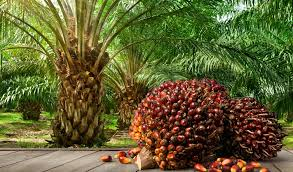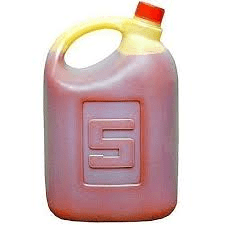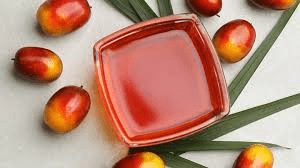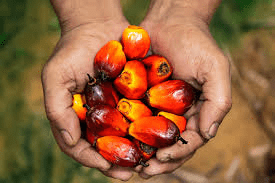Processing, packaging, and exporting palm oil involves several critical steps to ensure the oil is of high quality and safe for international markets. Palm oil is a versatile and widely used vegetable oil derived from the fruit of oil palm trees. It is used in food products, cosmetics, and industrial applications. The journey of palm oil from the plantation to the global market begins with cultivating oil palm trees.
Oil palm trees are typically grown in tropical regions with high rainfall and temperatures. The trees start bearing fruit after about three years and continue producing for up to 30 years. The fruit, known as fresh fruit bunches (FFBs), is harvested when it is ripe. Harvesting is usually done manually with a sickle or a mechanized cutter. The harvested FFBs are then transported to a processing mill.
At the mill, the first step in processing palm oil is sterilization. The FFBs are steamed at high temperatures to kill bacteria, deactivate enzymes, and loosen the fruit from the bunch. This step is crucial to prevent the deterioration of oil quality. After sterilization, the FFBs are stripped to separate the individual fruits from the bunches. This is typically done using a rotating drum or a threshing machine.
The separated fruits are then subjected to a process called digestion. During digestion, the fruits are heated and mechanically mashed to break down the flesh and release the oil. This is done in a digester, a large cylindrical vessel equipped with rotating blades. The resulting mash is then pressed to extract the crude palm oil (CPO). This is done using screw presses or hydraulic presses, which apply pressure to squeeze the oil from the fruit mash.
After pressing, the crude palm oil contains impurities such as water, solids, and fibers. These impurities are removed through a clarification process. The oil is first passed through a vibrating screen to remove large particles.
Then, it is pumped into a vertical clarifier tank, where it is allowed to settle. The clean oil rises to the top, while the heavier impurities settle at the bottom. The clear oil is skimmed off and further purified through a centrifuge, which separates any remaining impurities.
Once the crude palm oil is clarified, it is ready for refining. Refining is essential to remove free fatty acids, odors, and colors, making the oil suitable for consumption and industrial use. The refining process typically involves three stages: degumming, bleaching, and deodorizing.
During degumming, phospholipids and gums are removed by adding water or acid. In the bleaching stage, the oil is treated with bleaching earth or activated carbon to remove pigments and other impurities. Finally, the deodorizing stage involves heating the oil under a vacuum to remove volatile compounds that cause odors.
After refining, the palm oil is ready for packaging. Proper packaging is crucial to protect the oil from contamination and ensure it remains fresh during storage and transportation. Palm oil is typically packaged in drums, plastic containers, or bulk tanks. Each container is sealed tightly to prevent exposure to air and moisture, which can cause the oil to spoil. The packaging must also be labeled with important information such as the type of oil, net weight, production date, and expiration date.
Labeling is an important part of the packaging process. Labels provide essential information to consumers and help to ensure that the palm oil complies with regulatory requirements. Accurate labeling ensures that consumers have the necessary information about the product and helps to track the oil in case of any issues. It also helps in meeting the import regulations of different countries.
Once packaged, the palm oil is stored in a cool, dry place to maintain its quality until it is ready for distribution. Proper storage conditions are crucial to prevent the oil from oxidizing or becoming rancid. Palm oil should be stored at a temperature of about 20-25°C (68-77°F) and away from direct sunlight.
Exporting palm oil involves additional steps to meet international standards and regulations. Exporters must ensure that the palm oil complies with both domestic and international regulations. This includes obtaining necessary certifications such as health certificates, which confirm that the oil has been processed and handled according to safety standards. The oil must also be accompanied by documentation such as certificates of origin, which verify where the oil was produced.
Transportation is a key component of exporting palm oil. The oil must be handled carefully to prevent damage and contamination. For long-distance shipping, palm oil is often transported in bulk containers or tanker trucks. Proper temperature control during transit is important to prevent the oil from solidifying or spoiling. Palm oil should be transported at a stable temperature, ideally between 20-25°C (68-77°F).
Upon arrival in the destination country, the palm oil undergoes customs clearance. This involves checking the documentation and inspecting the oil to ensure it meets the importing country’s regulations. If everything is in order, the oil is cleared for entry into the market and then distributed to retailers, wholesalers, or directly to consumers.
Processing, packaging, and exporting palm oil involves a detailed series of steps to ensure the product is high-quality and safe for consumers. From cultivating and harvesting the fruit to processing, refining, packaging, and export compliance, each step is crucial in delivering a product that meets global standards.
By following best practices throughout the entire process, producers and exporters can provide palm oil that satisfies international customers and adheres to regulatory requirements. Proper handling, documentation, and compliance with export regulations are essential to ensure successful export operations and maintain the quality of the palm oil throughout its journey.
How to Process Palm Oil for Exportation

1. Harvesting Fresh Fruit Bunches (FFBs): Palm oil production begins with harvesting fresh fruit bunches (FFBs) from oil palm trees. This should be done at the right stage of ripeness, typically when the fruits start to detach from the bunches naturally.
2. Transportation to the Mill: Transport the harvested FFBs to the mill as quickly as possible to prevent the buildup of free fatty acids (FFAs), which can degrade the quality of the oil. Use clean, ventilated trucks to minimize spoilage during transport.
3. Sterilization: Sterilize the FFBs using steam to stop the formation of FFAs and to soften the fruit for easier processing. This process usually involves placing the FFBs in large sterilizer drums for about 90 minutes at a temperature of 140°C.
4. Threshing: After sterilization, the FFBs are sent through a threshing machine, which separates the fruit from the bunch stalks. The fruit is then collected for further processing.
5. Fruit Digestion: The separated fruits are then crushed in a digester. This step breaks down the oil-bearing cells and releases the oil. The digester consists of rotating drums with blades that mash the fruit.
6. Oil Extraction: Extract the oil from the digested fruit using either a mechanical press or a solvent extraction process. Mechanical pressing involves squeezing the fruit mash to extract the crude palm oil (CPO). Solvent extraction uses chemicals to dissolve the oil and then separates it from the pulp.
7. Clarification: Clarify the extracted oil by removing impurities such as water, solids, and fibers. This is typically done in a clarification tank, where the oil is allowed to settle and the impurities are removed from the bottom of the tank.
8. Purification: Further purify the oil through processes such as centrifugation and filtration to ensure it is free from contaminants. This step enhances the quality and shelf life of the oil.
9. Refining (Optional): For certain markets, you might need to refine the crude palm oil to remove free fatty acids, color, and odor. This can be done through physical or chemical refining methods, which produce refined palm oil suitable for direct consumption or further processing.
10. Quality Control: Implement a rigorous quality control process to ensure the palm oil meets international standards. Test for parameters such as moisture content, FFA levels, color, and purity. Regularly sample and analyze the oil throughout the processing stages.
11. Storage: Store the processed palm oil in clean, food-grade storage tanks. Ensure the tanks are sealed to prevent contamination and maintain the oil at a consistent temperature to prevent solidification.
12. Documentation: Prepare all necessary documentation, including certificates of analysis, health certificates, and any other regulatory documents required by the importing country. Accurate documentation is crucial for smooth customs clearance and compliance with international standards.
Read Also: Powdery Scab (Potatoes): Description, Damages Caused, Control and Preventive Measures
How to Package Palm Oil for Exportation

1. Select Packaging Materials: Choose high-quality packaging materials suitable for palm oil, such as plastic jerry cans, drums, or flexitanks. Ensure that the materials are food-grade, durable, and resistant to breakage.
2. Sterilize Packaging: Sterilize all packaging materials to prevent contamination. Use hot water, steam, or chemical sanitizers to ensure that containers are clean and safe for use.
3. Filling: Fill the sterilized containers with palm oil using automated filling machines for consistency and efficiency. Ensure the filling process is precise to avoid overfilling or underfilling, which can lead to wastage or regulatory issues.
4. Sealing: Seal the containers immediately after filling to prevent contamination and preserve freshness. Use tamper-evident seals to assure customers of the product’s integrity.
5. Labeling: Label each container with essential information, including product name, net weight, origin, production date, expiration date, batch number, and any required regulatory information. Ensure labels are clear, accurate, and compliant with the importing country’s regulations.
6. Packaging for Transport: Place the labeled containers in sturdy cardboard boxes or crates. Use dividers, bubble wrap, or foam inserts to prevent movement and breakage during transit. Ensure that the packaging provides adequate protection against shocks and vibrations.
7. Palletizing: Arrange the boxes on pallets for easier handling and transport. Secure the boxes to the pallets using stretch wrap or shrink wrap. Proper palletizing helps in efficient loading, unloading, and storage.
8. Temperature Control: If required, use insulated containers or refrigerated transport to maintain the palm oil at a consistent temperature during shipping. Temperature control is crucial for preventing solidification or spoilage.
9. Shipping Documentation: Prepare all necessary shipping documentation, including invoices, packing lists, certificates of origin, and any other required documents. Ensure that all documentation is accurate and compliant with both the exporting and importing countries’ regulations.
10. Final Inspection: Conduct a final inspection of the packaged palm oil and documentation before shipping. Address any issues to ensure that the shipment meets all quality and regulatory standards.
How to Export Palm Oil for Profits
1. Market Research: Conduct thorough market research to identify demand, competition, and pricing in potential export markets. Understand the preferences, regulatory requirements, and quality standards of consumers in these markets.
2. Regulatory Compliance: Familiarize yourself with the export regulations of your country and the import regulations of the target market. Ensure that your palm oil complies with all health, safety, and quality standards.
3. Certifications: Obtain necessary certifications such as RSPO (Roundtable on Sustainable Palm Oil) to enhance marketability and demonstrate commitment to sustainable practices. These certifications can increase consumer trust and access to premium markets.
4. Pricing Strategy: Develop a competitive pricing strategy that covers production, packaging, shipping, and other costs while ensuring profitability. Consider factors such as market demand, competition, and production costs.
5. Finding Buyers: Identify potential buyers through trade shows, online platforms, and industry networks. Establish relationships with importers, wholesalers, and retailers in the target market.
6. Negotiating Contracts: Negotiate clear and detailed contracts with buyers. Include terms of sale, payment methods, delivery schedules, and responsibilities of each party. Clear contracts prevent misunderstandings and disputes.
7. Logistics and Shipping: Plan the logistics of shipping, including selecting reliable shipping companies, managing documentation, and coordinating with freight forwarders. Efficient logistics ensure timely delivery and maintain product quality.
8. Quality Assurance: Implement strict quality control measures throughout processing, packaging, and shipping. Consistently high-quality products enhance your reputation and attract repeat business.
9. Marketing and Promotion: Develop a marketing strategy to promote your palm oil. Use online marketing, trade fairs, and industry publications to reach potential buyers and showcase the benefits of your products.
10. Monitor and Adapt: Continuously monitor market trends, customer feedback, and sales performance. Be prepared to adapt your strategies based on changing market conditions and customer needs to maximize profitability.
Read Also: Tomato Ringspot Virus: Description, Damages Caused, Control and Preventive Measures
Frequently Asked Questions (FAQs) About Palm Oil

1. What is the difference between crude and refined palm oil?
Crude palm oil is the raw oil extracted from palm fruits, which contains impurities and free fatty acids. Refined palm oil undergoes further processing to remove impurities, color, and odor, making it suitable for direct consumption and various applications.
2. Why is sustainable palm oil important?
Sustainable palm oil production aims to minimize environmental impact, protect biodiversity, and support local communities. It ensures that palm oil is produced without causing deforestation or harming wildlife.
3. What certifications are required for exporting palm oil?
Certifications like RSPO (Roundtable on Sustainable Palm Oil) are often required to demonstrate sustainable practices. Depending on the importing country, additional certifications such as organic or non-GMO may be necessary.
4. How can I ensure the quality of my palm oil?
Implement rigorous quality control measures throughout processing, packaging, and storage. Regularly test for parameters such as moisture content, free fatty acids, and purity to maintain high standards.
5. What are the common uses of palm oil?
Palm oil is used in various industries, including food (cooking oil, margarine, baked goods), cosmetics (soaps, creams), and biofuels. Its versatility and stability make it a popular ingredient.
6. How do I store palm oil to prevent spoilage?
Store palm oil in clean, food-grade containers in a cool, dry place. Avoid exposure to direct sunlight and maintain a consistent temperature to prevent solidification or rancidity.
7. What are the key markets for palm oil export?
Key markets for palm oil export include China, India, the European Union, and the United States. These regions have high demand for palm oil in food, cosmetics, and industrial applications.
8. How do I find buyers for my palm oil?
Find buyers through trade shows, online marketplaces, industry networks, and trade associations. Establish relationships with importers, wholesalers, and retailers in target markets.
9. What are the challenges in exporting palm oil?
Challenges include regulatory compliance, fluctuating market prices, competition, and environmental concerns. Addressing these challenges requires careful planning and adherence to standards.
10. How can I improve the profitability of my palm oil export business?
Improve profitability by optimizing production processes, maintaining high-quality standards, obtaining necessary certifications, and developing effective marketing strategies. Continuous monitoring and adaptation to market trends are also crucial.
Read Also: Everything You Need to Know About Moen Garbage Disposal

